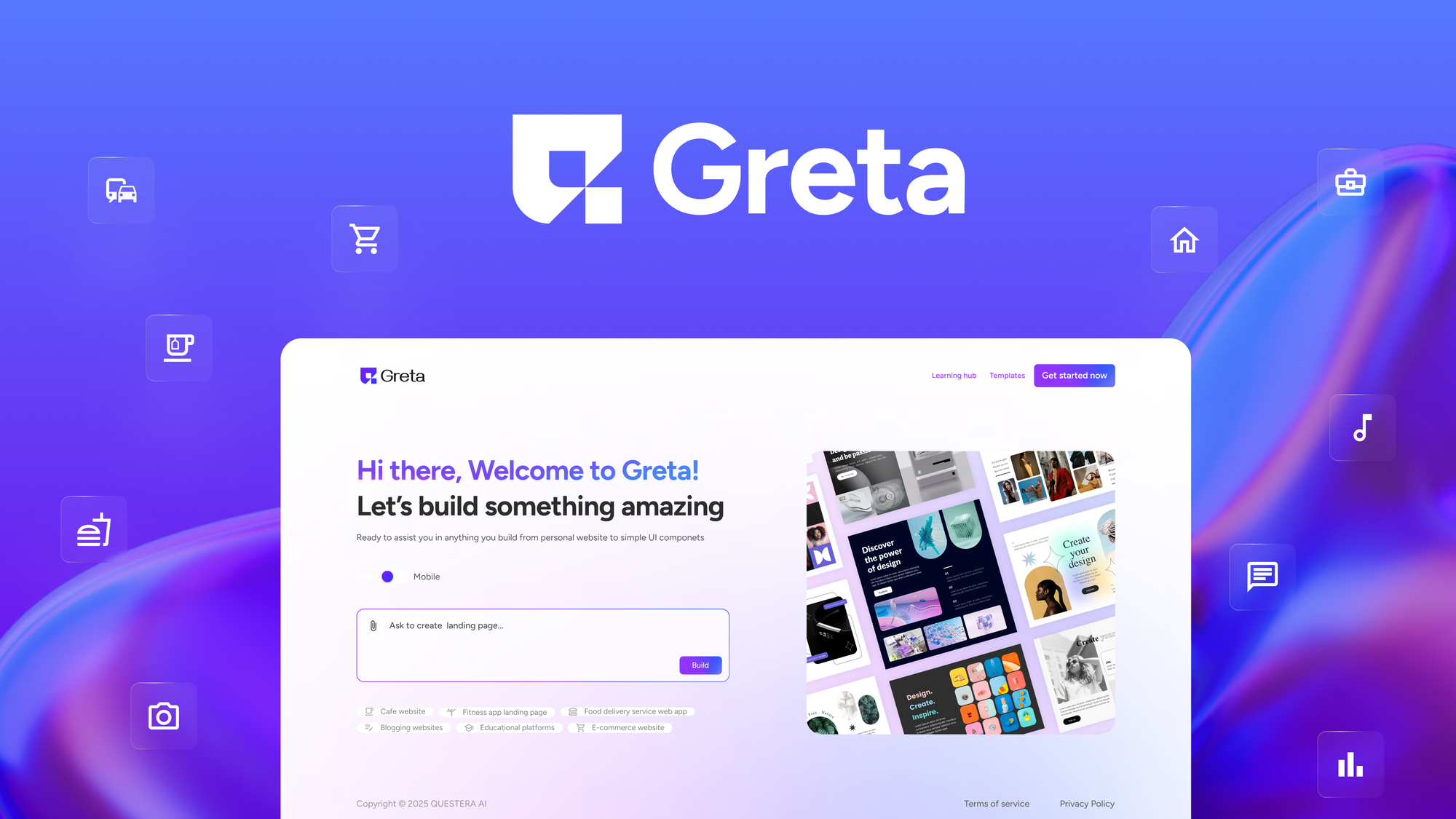As a business owner grappling with the chaos of data management, I was on the hunt for a solution that could bring clarity to my operations. When I stumbled upon Diaflow, an intriguing platform on AppSumo that leverages AI to create applications without a single line of code, I felt a glimmer of hope. Could this be the autofix I needed for my productivity woes?
Table of Contents
ToggleExploring Diaflow: A No-Code Revolution
I recently explored Diaflow, an innovative platform available through AppSumo that promises to transform business operations using AI-powered applications and automated workflows. The concept of enabling users to build AI applications without needing any code is truly revolutionary. It’s like giving everyone a key to unlock their creativity without the barriers of traditional coding.
Introduction to Diaflow’s Core Functionality
Diaflow aims to streamline internal tasks by making automation accessible to both technical and non-technical users alike. Imagine being able to create complex automation visually. That’s what Diaflow offers. It’s designed for those who may not have a coding background but still want to harness the power of technology.
- Visual Automation: Users can create workflows without writing a single line of code.
- Data Management: Connect various data sources like Google Sheets and Airtable effortlessly.
- GDPR Compliance: Ensures that your data handling meets legal standards.
As I navigated the platform, I was impressed by its intuitive interface. It allows for seamless integration with popular applications, including Microsoft SQL Server, Outlook, and Slack. This capability means I can create personalized workflows that sync with my favorite tools, making my life a lot easier.
Comparison with Traditional Coding Methods
Now, let’s talk about traditional coding. Coding can be daunting. It often requires years of study and practice. But with Diaflow, that barrier is removed. You don’t need to be a tech wizard to automate your tasks. This is a game-changer for small businesses and entrepreneurs.
Think about it: How many people have great ideas but lack the technical skills to bring them to life? Diaflow empowers these individuals. It’s like giving them a paintbrush and a canvas, allowing them to create without the fear of making mistakes in code.
While traditional coding can offer more customization, Diaflow provides a balance of flexibility and ease of use. For many, the ability to quickly prototype and iterate on ideas is far more valuable than the nitty-gritty details of coding.
Discussion on AI’s Role in No-Code Platforms
AI is at the heart of Diaflow. It enhances the platform’s capabilities, allowing users to leverage advanced models from providers like OpenAI and Google. This integration means that even if you’re not a data scientist, you can still utilize powerful AI tools to analyze data and automate processes.
As a tech entrepreneur once said,
“The future is no-code, where everyone can innovate without barriers.”
This statement resonates deeply with what Diaflow stands for. It’s about democratizing technology, making it accessible to all.
Moreover, Diaflow’s approach to data management is noteworthy. It allows users to upload data in CSV format and utilize smart tables. This feature can significantly help in organizing and streamlining operations within a business. It’s like having a personal assistant that handles all the tedious tasks for you.
In my research, I noted several key features that Diaflow highlights. The platform launches with a one-time payment structure for lifetime access, which is particularly compelling. This pricing model is attractive, especially for those looking to invest in long-term solutions.
Overall, Diaflow appears to be a promising tool for anyone looking to enhance their business efficiency through AI-driven automation. With its user-friendly interface and ongoing updates, I’m excited to see how it continues to evolve. The potential for reducing manual data processes is immense, and I’m keen to monitor further developments and feedback from the user community.
Features that Make Diaflow Stand Out
I recently had the opportunity to dive into Diaflow, a platform that’s generating buzz for its ability to transform business operations through AI-powered applications and automated workflows. What caught my attention? The promise of creating visual automation without needing any technical skills. Yes, you heard that right! No coding required.
Visual Automation Creation
Imagine being able to design complex automation visually. Sounds appealing, right? With Diaflow, you can do just that. This feature is a game-changer for both technical and non-technical users. It allows anyone to create workflows that suit their needs without the headache of coding. You can drag and drop elements, connect different processes, and watch your automation come to life.
But why is this important? Well, many traditional automation tools are complex and intimidating. Diaflow flips that script. It focuses on a user-friendly interface that makes automation accessible. No more spending hours trying to understand complicated code. Instead, you can focus on what really matters: enhancing your business operations.
Seamless Integrations
Another standout feature is Diaflow’s ability to integrate with prominent tools like Microsoft SQL and Slack. This means you can connect your favorite applications and streamline your workflows effortlessly. For instance, if you use Microsoft SQL for database management, you can easily pull data into Diaflow and automate tasks without any hassle.
- Microsoft SQL: Manage your databases seamlessly.
- Slack: Keep your team in the loop with automated notifications.
- Google Sheets: Pull data directly for real-time updates.
These integrations are crucial for businesses looking to enhance productivity. They allow you to create personalized workflows that sync with the tools you already use. It’s like having a personal assistant that knows exactly how you work.
Advanced AI Models for Data Security
Data security is a hot topic these days. With Diaflow, you can rest easy knowing that advanced AI models are in place to protect your information. The platform ensures that your data remains secure, which is vital for any business. After all, who wants to risk their sensitive information?
Moreover, Diaflow is committed to GDPR compliance. This focus on data protection builds trust with users. As a business owner, I appreciate knowing that my data is handled responsibly. It’s not just about automation; it’s about doing it safely.
User Experience Matters
As I explored Diaflow, one quote resonated with me:
“User experience is key to ensuring broader adoption of automation tools.” – Market Analyst
This statement perfectly encapsulates what Diaflow aims to achieve. By prioritizing user experience, they are setting the stage for wider acceptance of automation tools.
Diaflow is designed to streamline internal tasks, making automation accessible to everyone. Whether you’re a tech whiz or someone who struggles with technology, Diaflow has something to offer. This inclusivity is what makes it stand out in a crowded market.
In conclusion, Diaflow’s features are impressive. The ability to create visual automation without technical skills, seamless integrations with tools like Microsoft SQL and Slack, and a strong focus on data security are just a few reasons why this platform is worth considering. If you’re looking to enhance your business operations, Diaflow might just be the solution you need. You can check it out here.
Pricing Structure: Is It Worth It?
When I first stumbled upon Diaflow, I was intrigued by its tiered pricing structure. It starts at a modest $89 and goes all the way up to $639. This range caught my attention. But is it worth the investment? Let’s break it down.
Breakdown of Tiered Pricing
Diaflow offers four distinct licensing tiers, each designed to cater to different user needs. Here’s a quick overview:
- License Tier 1: $89, 6,000 credits/month, 15 users, 5 applications
- License Tier 2: Pricing not specified, but offers more credits and users.
- License Tier 3: Pricing not specified, with even more features.
- License Tier 4: $639, 50,000 credits/month, 50 users, 50 applications
Each tier provides different levels of automation credits, user access, and app capabilities. For instance, Tier 1 is great for small teams, while Tier 4 is tailored for larger organizations. This flexibility is a big plus.
Comparison of Features Across Tiers
Now, let’s talk about features. The higher the tier, the more credits and capabilities you get. But it’s not just about the numbers. It’s about what you can do with those credits.
In Tier 1, you can create basic automations with limited applications. As you move up to Tier 4, the possibilities expand significantly. You get access to advanced AI models and integrations with popular applications like Microsoft SQL Server and Slack. This means you can create personalized workflows that sync seamlessly with your favorite tools.
Customer Feedback on Credit Consumption
<pHowever, not everything is sunshine and rainbows. I came across some customer feedback that raised a red flag. Many users expressed concerns about rapid credit depletion. Even at the higher tiers, credits can vanish quickly. This is something to consider if you plan to use the platform heavily.
As one financial expert pointed out,
“Finding a balance between features and affordability is crucial for long-term user retention.”
This sentiment resonates with many potential users who are weighing their options.
Lifetime Access Model
One of the most appealing aspects of Diaflow is its lifetime access model. For a one-time payment, you can access the platform indefinitely. This is particularly compelling for those of us who want to avoid recurring fees. But does this model offset the concerns about credit consumption? It’s a tricky balance.
Final Thoughts on Pricing Effectiveness
In my exploration, I found that while the pricing structure is competitive, the effectiveness of that pricing hinges on how quickly credits are consumed. If you’re using the platform for intensive tasks, you might find yourself needing to upgrade sooner than expected.
Ultimately, Diaflow’s tiered pricing structure offers a range of options for different users. Whether you’re a small business or a larger enterprise, there’s likely a tier that fits your needs. But, as with any investment, it’s essential to weigh the features against the costs and potential credit consumption.
If you’re curious about trying Diaflow, you can check it out through my affiliate link: Diaflow Reviews – Build powerful AI apps without a single line of code.
User Feedback: The Good, The Bad, and The Promising
When I first stumbled upon Diaflow, I was intrigued. The platform claims to revolutionize business operations with AI-powered applications and automated workflows. But what do users really think? Let’s dive into the feedback.
The Good: User-Friendly Interface
One of the standout features that many users rave about is Diaflow’s user-friendly interface. It’s designed for both technical and non-technical users, making it accessible to everyone. Imagine being able to build complex automation without writing a single line of code. Sounds appealing, right?
Many reviews highlight how intuitive the platform is. Users appreciate the visual approach to creating automation. This means you can see your workflows come to life, which is a huge plus for visual learners like me. The ability to integrate with popular applications like Microsoft SQL Server, Slack, and Google Sheets makes it even more attractive. It’s like having a personal assistant that knows exactly how to streamline your tasks.
The Bad: Customer Service Concerns
However, not all feedback is glowing. Some users have expressed their frustrations regarding customer service. It seems that response times can be slow, leaving users feeling unsupported when they encounter issues. This is a critical area for any platform, especially one that aims to simplify business operations. After all, if you run into a problem, you want help quickly, right?
Moreover, there have been complaints about the credit system. Users have noted that their credits deplete faster than expected, even at higher pricing tiers. This can be concerning for businesses that rely on predictable budgeting. It raises the question: how can Diaflow improve this aspect to enhance user satisfaction?
The Promising: Future Improvements
Despite the criticisms, there’s a silver lining. Jonathan Viet Pham, the founder of Diaflow, has been proactive in addressing user feedback. He emphasizes that
“Customer feedback is our roadmap to success.”
This commitment to improvement is promising. Users can expect features like BYOK (Bring Your Own Key) for integrating personal API keys, which will enhance flexibility.
Additionally, plans for whitelabeling and more transparency regarding credit usage are on the horizon. This shows that the team is listening and willing to adapt based on community needs. It’s exciting to think about how these changes could positively impact user experience.
The Importance of User Feedback
User feedback is crucial in shaping a platform like Diaflow. It helps the team understand what works and what doesn’t. As users, we have the power to influence the future of the platform. Our voices matter. The potential for community involvement in shaping Diaflow’s future is something I find particularly encouraging.
Overall, Diaflow has received a mixed reception in the marketplace. While the user-friendly interface and automation capabilities are praised, concerns about customer service and credit allocation remain. However, with ongoing improvements and a commitment to user satisfaction, I believe Diaflow has the potential to become a valuable tool for many businesses.
With a 60-day money-back guarantee, I’m tempted to give Diaflow a try. After all, if it can truly turn data chaos into clarity while boosting productivity, it might just be the solution I’ve been looking for. If you’re interested in exploring Diaflow, check it out here.
TL;DR: Diaflow is a no-code platform that empowers users to build AI applications effortlessly, offering competitive pricing and features aimed at improving business automation. While it promises to streamline operations, concerns about its credit system and customer support linger in the community. A 60-day money-back guarantee sweetens the deal.






